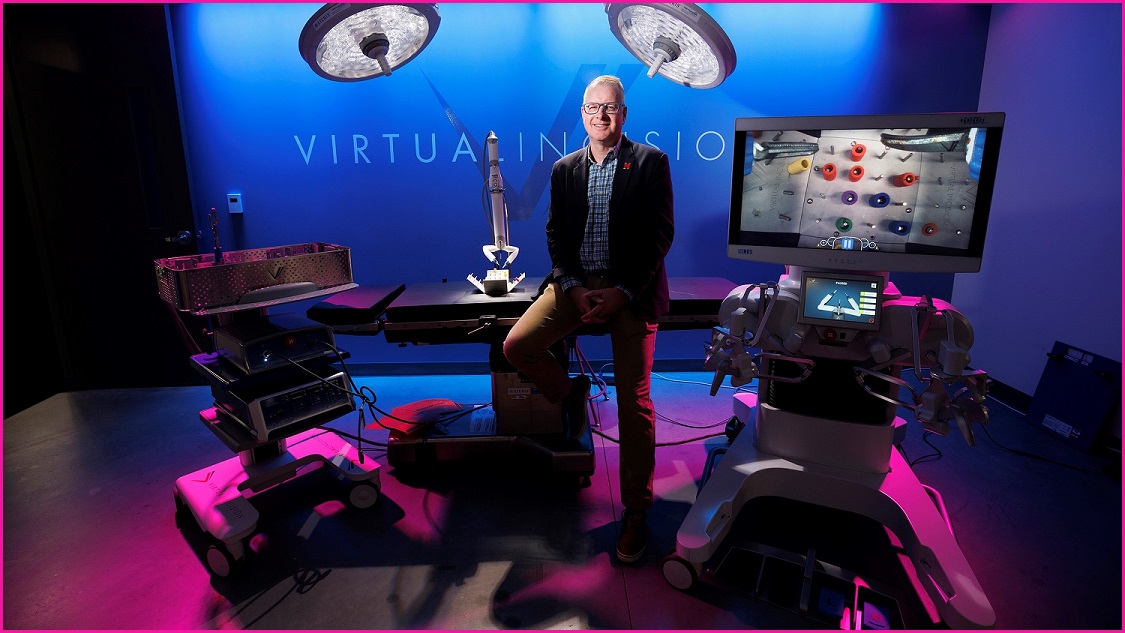A miniaturised robot is on schedule to blast off into space to showcase its skills.
The compact, two-pound miniature robotic assisted surgery (RAS) device will carry out mock operations aboard the International Space Station in 2024.
Invented by University of Nebraska’s professor of engineering Shane Farritor, the tiny surgical device, known as MIRA, short for ‘miniaturised in vivo robotic assistant’, will work autonomously without the guiding hand of a doctor or astronaut to test its skills in space.
“MIRA continues to push the boundaries of what’s possible in RAS. We’re excited to take it a step further and help identify what could be possible in the future as space travel is becoming more of a reality for mankind,” Farritor said.
Its small size makes it appealing to surgeons and hospital staff and makes it ideal for use within the tight space and mass requirements of a long-duration space mission.
Onboard, MIRA will operate inside a microwave oven-sized experiment locker and perform activities that simulate those used in surgery, such as cutting simulated tissue and manipulating small objects, enabling the research team to collect real-world data through these simulations.
Preparing MIRA for take off
During the next year, Farritor and engineering graduate student Rachael Wagner will write the necessary software and configure MIRA to fit inside a space station experiment locker.
The team will also need to exhaustively test the device to make sure it’s robust enough to survive launch and ensure its systems will perform as anticipated in space.
NASA has ambitious plans for long-duration space travel, Farritor explained, making it especially important to test the capabilities of the technology that may be needed during missions lasting months and even years.
“As people go further and deeper into space, they might need to do surgery someday,” he said.
“We’re working toward that goal.”
MIRA has two key advantages.
First, it can be inserted through a small incision, enabling doctors to perform abdominal surgery in a minimally invasive manner.
It utilises existing minimally invasive tools and techniques familiar to laparoscopic surgeons, and does not require a dedicated operating room or specialised infrastructure.
With its compact size, it’s expected to be significantly less expensive than existing robotically-assisted surgical devices
In previous tests, surgeons have successfully used the device to perform colon resections (colectomy).
Secondly, the technology could allow surgeons to work remotely — someday potentially repairing an astronaut’s ruptured appendix on a mission to Mars or removing shrapnel from a soldier injured by an IED thousands of miles away.
In a previous experiment, retired NASA astronaut Clayton Anderson took the robot’s controls while at the Johnson Space Center in Houston, directing MIRA to perform surgery-like tasks in an operating room almost 1,500 kilometres away at the University of Nebraska Medical Center in Omaha.
Could automatic surgery be a reality in the future?
The device is being programmed to work autonomously to conserve space station communications bandwidth and to minimise the amount of time astronauts spend with the experiment.
“The astronaut flips a switch, the process starts and the robot does its work by itself,” Farritor said.
“Two hours later, the astronaut switches it off and it’s done.”
It will be the most autonomous operation of the robot so far.
Although Farritor anticipates MIRA will function on its own in 50 to 100 years, this mission’s goal is not autonomy, but to fine-tune the robot’s operation in zero gravity.
Farritor is co-founder of Virtual Incision, a startup company based on Nebraska Innovation Campus.
For nearly 20 years, he and his colleagues have been developing the tiny surgical robot, which has attracted more than $144 million (US$100M) in venture capital investment since its founding in 2006.










